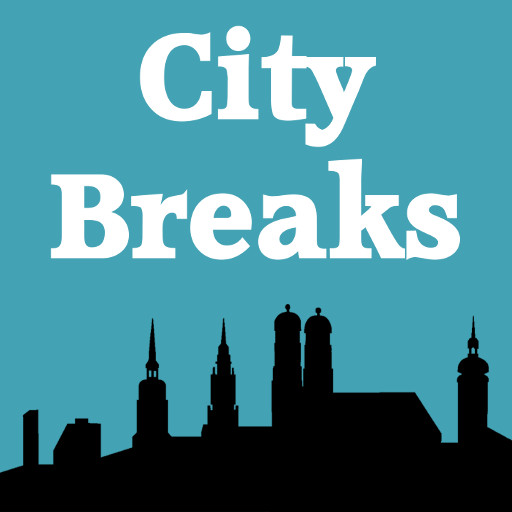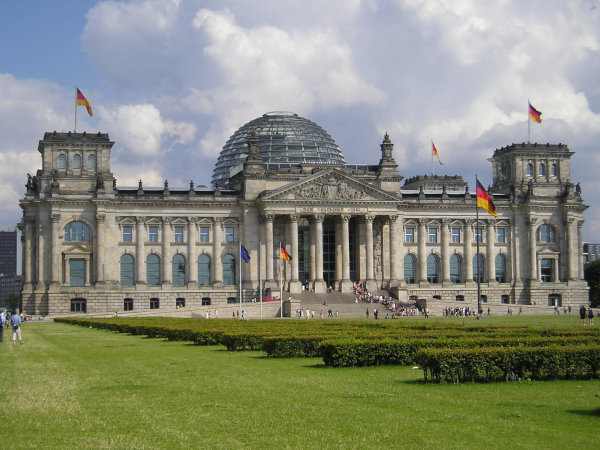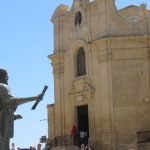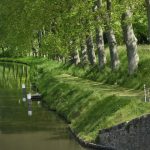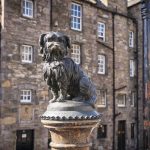Willkommen in Berlin: welcome to Berlin. There’s nowhere quite like it: a turbulent history, an unrivalled cultural richness, green and modern and laid back all at once. The city of Marlene Dietrich and David Bowie, of Kafka and Frederick the Great – something for everyone! This introduction to Berlin brings you information to help you get your bearings and pick up the basic facts which underpin everything. See below for a full list of the episodes in our Berlin series, useful links and a reading list.
History: The Key Facts
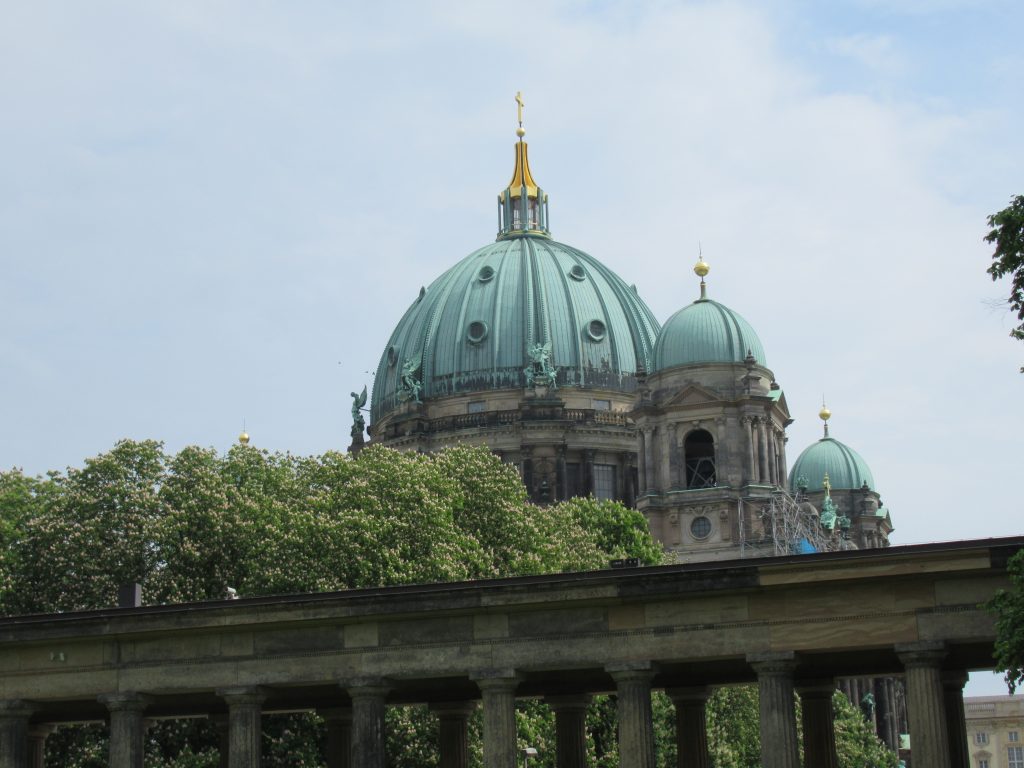
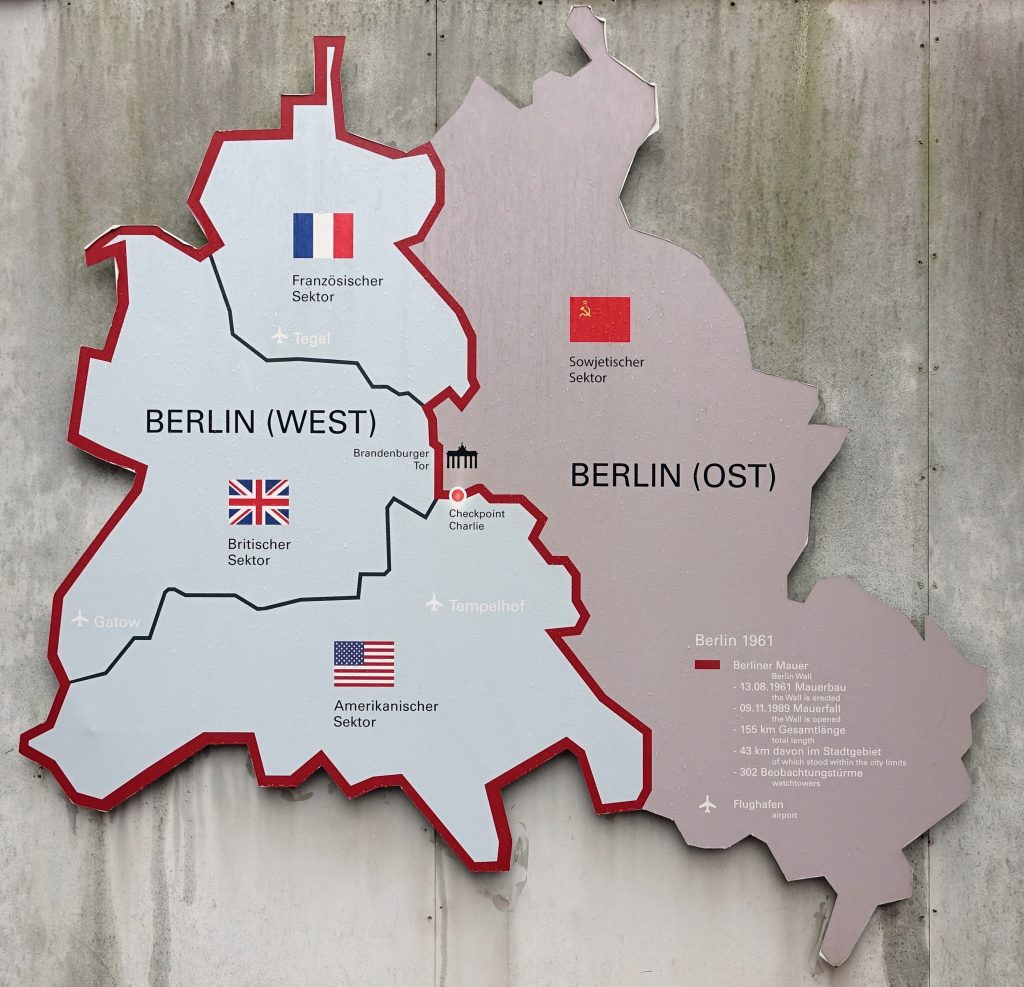
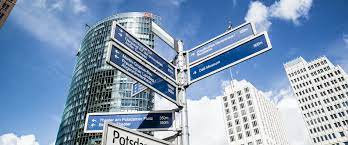
The problem with Berlin’s history is how to summarise! Let’s mention the Hohenzollern family who ruled as Kings of Prussia, then Germany, for 5 centuries, from 1411 until the abdication of Kaiser Wilhelm II in 1918. You can visit their palaces at Charlottenburg and Potsdam and enjoy other baroque beauties like the Opera House and the French and German cathedrals on Gendarmenmarkt, all built by the best-known Hohenzollern, Frederick the Great. And in Berlin Cathedral, you can see the crypts where many of the family are buried.
In the 20th century, Berlin was Hitler’s wartime capital, left in ruins at the end of the war and then divided into 4 sectors, American, British French and Russian. For 11 months in 1948-9 the allies mounted the Berlin airlift to prevent the Soviets from sealing Berlin off from the west. In August 1961, almost overnight, the Berlin Wall went up, dividing the city into two for the next 28 years.
The west was an island surrounded by East Germany; the eastern half became the capital of East Germany. The fall of the wall led to the reunification of Germany and today, more than 3 decades later, the city has grown back together, so that the main reminders of its division are in its museums rather than in its streets.
Get Your Bearings

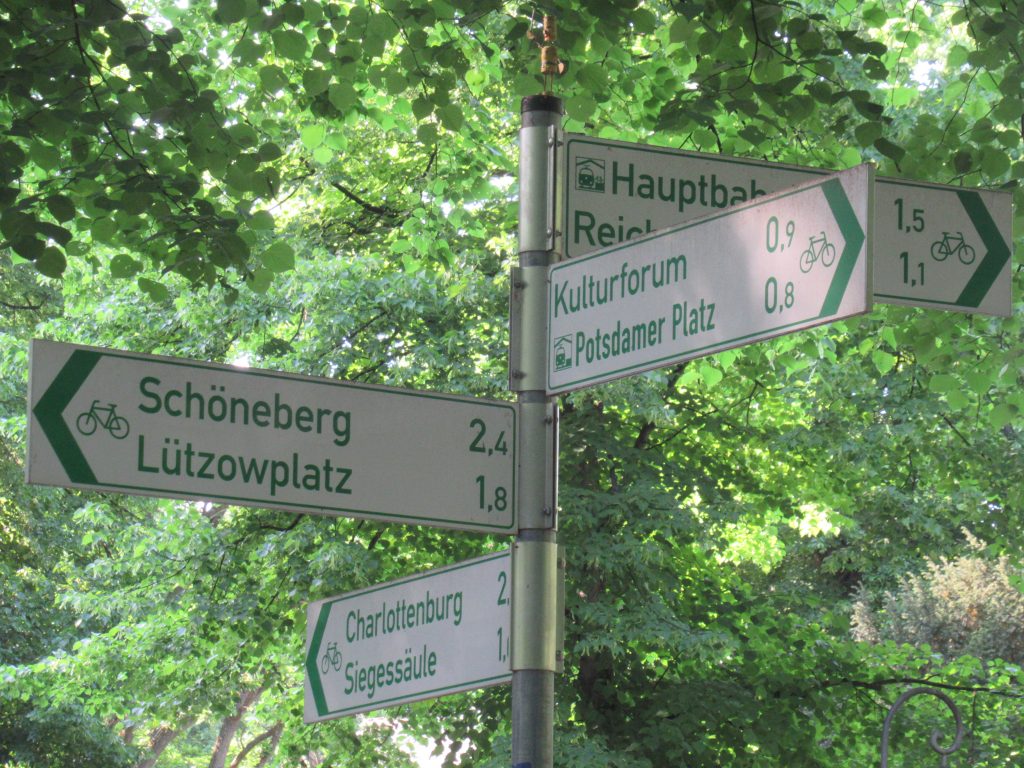
Build up a map of Berlin in your mind: the River Spree winds horizontally across the city, dividing and joining up again to form Museum Island pretty much in the centre; a massive park – the Tiergarten – occupies much of the north-western quarter and leading from it off to the east is the street where you will spend much of your time, the lovely Unter den Linden, which means ‘Under the Lime Trees’.
At the Tiergarten end is Berlin’s best-known landmark, the Brandenburg Gate, from which you can walk to the Reichstag (parliament) and the Holocaust Memorial in just a few minutes. A wander east down Unter den Linden takes you past many of Berlin’s most famous sights, including the Berlin Cathedral, the former Royal Palace, the German History Museum and the entrance to Museum Island.
The Berlin Wall and East Berlin
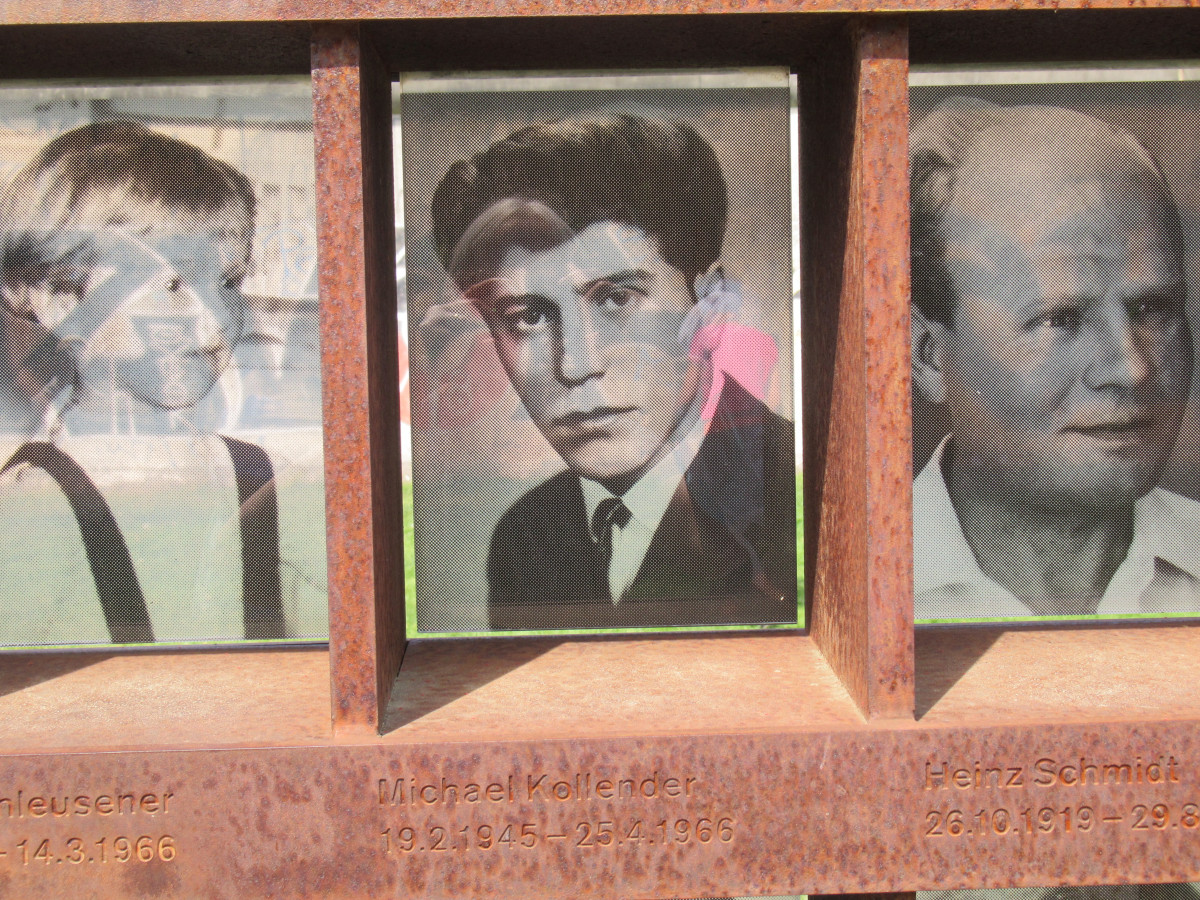

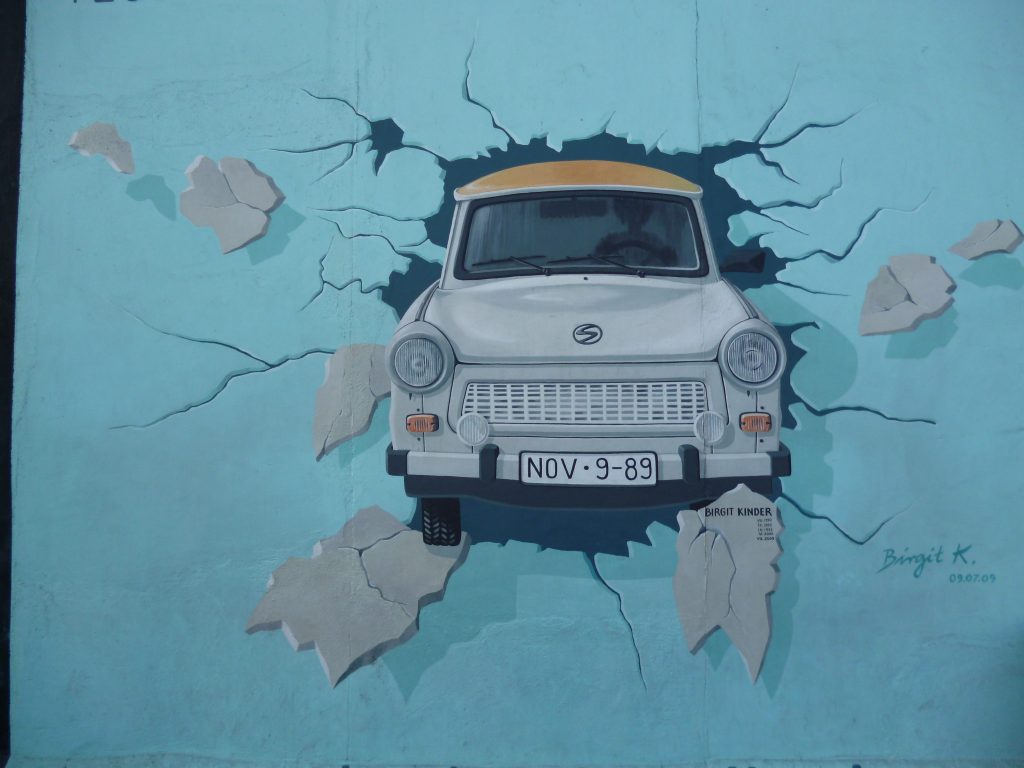
The route of the Berlin Wall, now mostly destroyed, runs roughly from North to South through the city, including right past the Brandenburg Gate. In the eastern half, as well as Unter den Linden, are pretty baroque squares like Gendarmenmarkt and Bebelplatz, and the vast Alexanderplatz, today a lively centre for shopping and cultural visits. Nearer the wall, but still in the former East Berlin is Potsdamer Platz, the cultural hub of Berlin before its complete destruction in World War Two, and now rebuilt with shopping centres and signature buildings like the Sony Centre.
Berlin’s Western Half
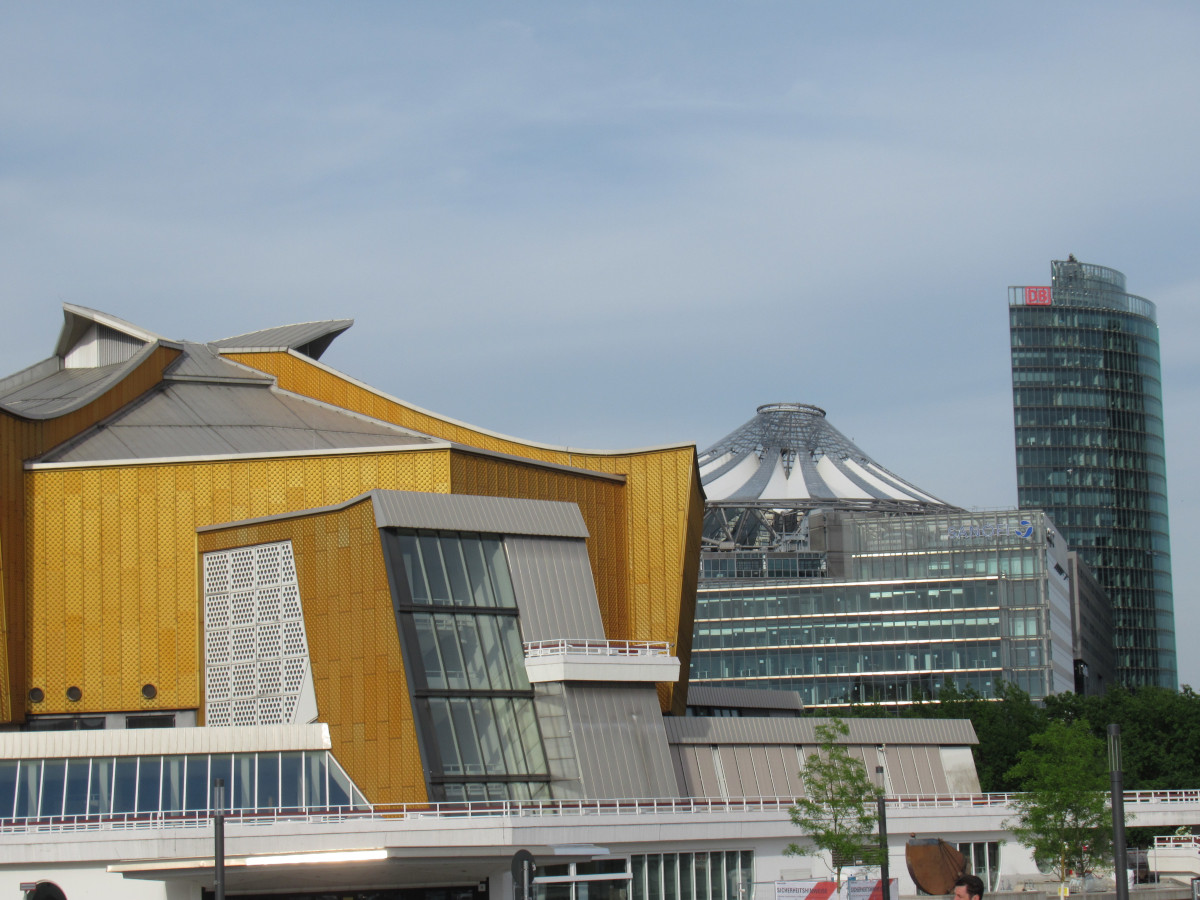
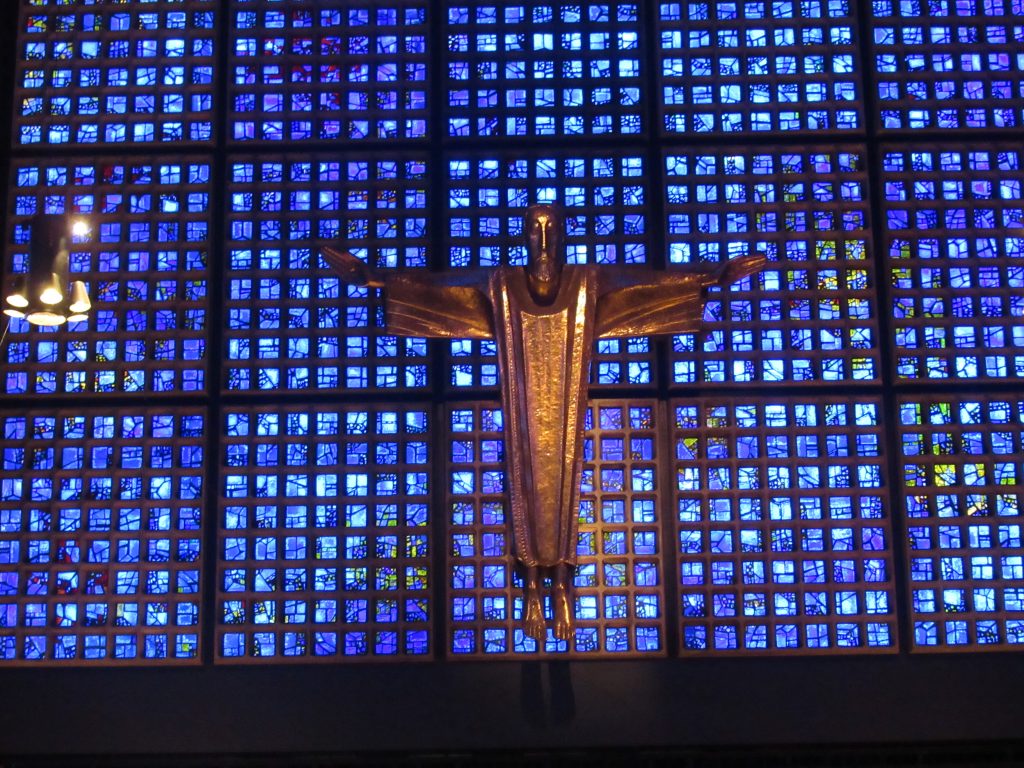
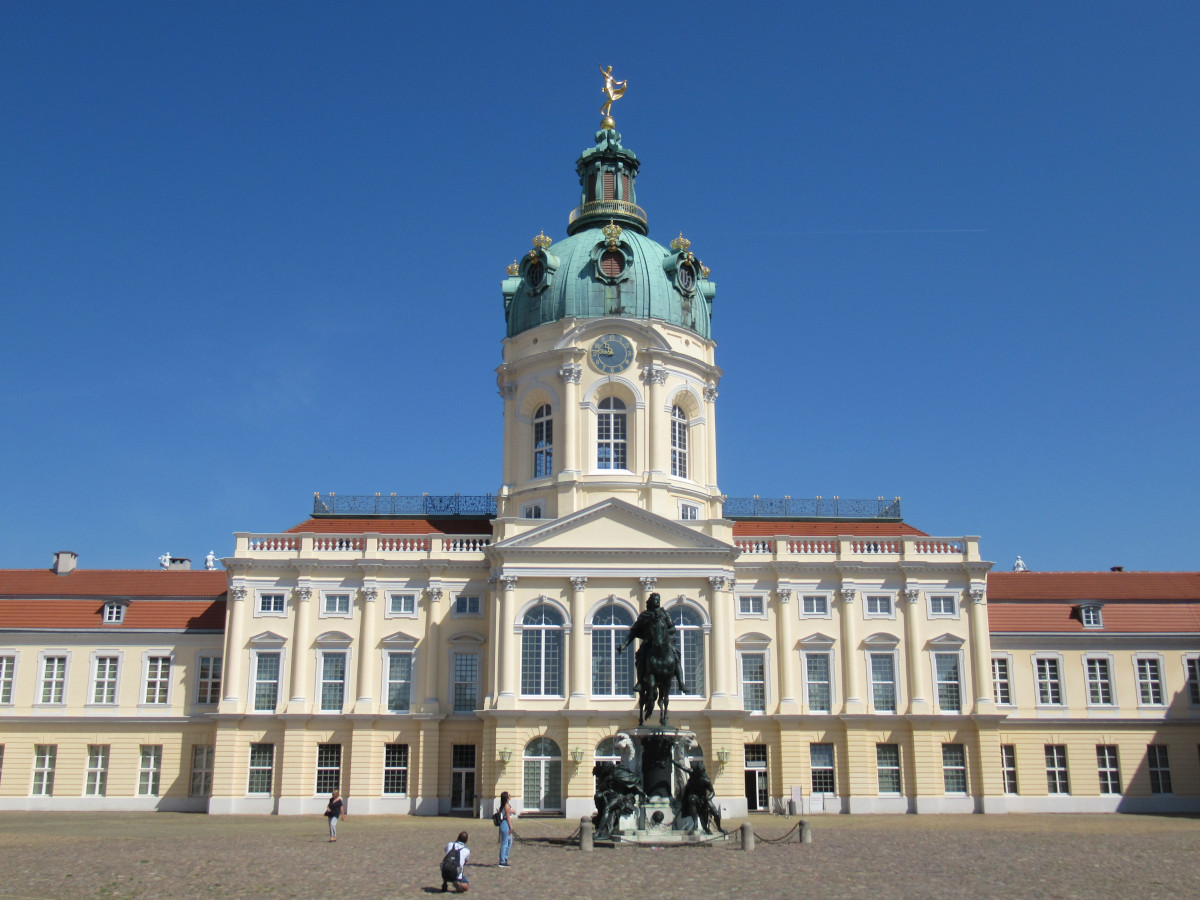
The western half of the city is dominated by the Tiergarten – 520 acres of woodland and lakes, criss-crossed by foot and cycle paths and, in the middle, the Siegessäule (Victory Column) where Berliners like to gather when Germany wins the World Cup! South of the Tiergarten, the main street is the unpronounceable Kurfürstendamm, or Ku’damm for short, with the Kaiser Wilhelm Memorial Church at its western end. It was largely destroyed in WW2 bombing. One tower, which survived has been left standing and a new, ultra-modern church has been built next door. Further west is Charlottenburg, a lovely baroque palace built as a summer residence for the royal family.
Symbols of berlin
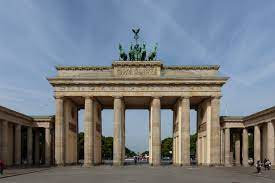

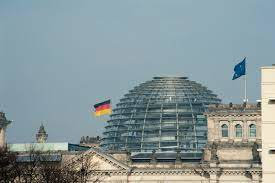
The official symbol of Berlin is a black bear, which you can see on the city shield and you will see bears everywhere. Large coloured polystyrene ones pop up on street corners, in shops and even on the underground. Look out too for the ubiquitous take-away sausage stands, the street-corner Kneipen (pubs) and the elegant cafes serving Kaffee und Kuchen (coffee and cake) And don’t forget the Ampelmann, the squat little red and green figure on traffic crossings, so beloved that there are specialist shops where you can buy him on every kind of souvenir.
In the next post, we’ll be visiting two central Berlin landmarks, the Reichstag and the Brandenburg Gate. Meanwhile, we can recommend some weblinks and guidebooks which proved useful in our research. If you fancy doing some reading around Berlin in all its variety, also two anthologies which will take you all over the city, both past and present, and give you lots to think about. And below that are links to every other post in the Berlin series.
Listen to the podcast
Other Posts in the Berlin Series
The Reichstag and the Brandenburg Gate
Unter den Linden
The Tiergarten and the Ku’damm
Four Berlin Squares
Finding World War 2 in Berlin
Holocaust and Remembrance
In Search of the Berlin Wall
In Search of East Berlin
Berlin’s Top 3 Art Galleries
More Berlin Art
Music and Theatre
Film and Cinema
Finding Jewish Culture in Berlin
Charlottenburg, Berlin’s Summer Palace
A Day at the Lakes
Non-fiction Writing on Berlin
Novels set in Berlin
links and reading
Berlin Tourist Office
Germany Travel Information
4 Useful Guidebooks
Lonely Planet Berlin by Andrea Schulter-Peevers
Eyewitness Berlin
Wanderlust in Berlin by Julian Tompkin
Berlin Like a Local by the people who call it home
HISTORY
Berlin, the Story of a City by Barney White-Spunner
Berlin: Imagine a City by Rory MacLean
Frederick the Great: King of Prussia by Tim Blanning
Berlin 1936 by Oliver Hilmes
Jews in Berlin by Andreas Nachama
Stasiland by Anna Funder
Tunnel 29 by Helena Merriman
Beyond the Wall East Germany 1949 – 1990 by Katja Hoyer
BIOGRAPHY
Outcast: A Jewish Girl in Wartime Berlin by Inge Deutschkron
The House by the Lake by Thomas Harding
Red Love by Maxim Leo
NOVELS SET IN BERLIN
Effi Briest by Theodor Fontane
The Luminous Life of Lily Aphrodite by Beatrice Collin
Goodbye to Berlin by Christopher Isherwood
Alone in Berlin by Hans Fallada
Fatherland by Robert Harris
The Spy Who Came in from the Cold by John Le Carré
The Berliners by Emma Harding
Book of Clouds by Chloe Aridjis
2 BERLIN ANTHOLOGIES
City Lit Berlin Edited by Heather Reyes
Berlin, A Literary Guide for Travellers by Paul Sullivan and Marcel Krueger
Last Updated on August 17, 2023 by Marian Jones
